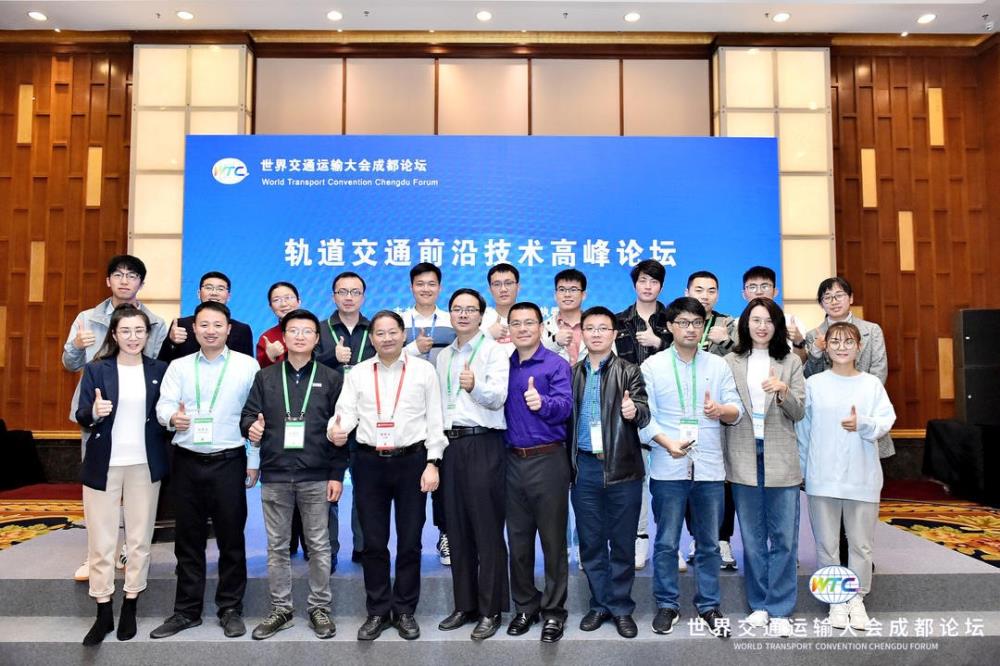Focusing on the theme “Intelligent New Transport and Collaboration on New Development”, Chengdu Forum of the World Transport Convention (WTC), an international exchange platform forged by the State Government, was convened on November 9 in Chengdu in Western China.
The University, as one of the hosting organizations, participated from the beginning to the end in the whole process of preparation. At the invitation of the organizing committee, Yang Dan, President of the University, Qian Qingquan, Academician of China Academy of Engineering, He Chuan, Vice President, and Lu Chunfang, Academician of China Academy of Engineering and an alumnus of the University, attended the Convention, and Lu and He delivered keynote speeches at the Opening Ceremony.The World Transport Conference (WTC) is sponsored by China Association for Science and Technology (CAST), Ministry of Transport (MOT), and Chinese Academy of Engineering (CAE). Liu Wenjie, Vice Chairman of International Road Federation (IRF), Deputy Director of the WTC Executive Committee, and Vice President and Secretary General of China Highway & Transportation Society, presided over the Conference.


At the Opening Ceremony, He Chuan, Vice President of the University, delivered a keynote speech entitled “The Key Technologies for the Construction and Operation of Large-scale Highway Tunnels in Mountainous Areas with Complex and Adverse Geological Conditions.”

At present, the density of highway network in Eastern China is 118 kilometers/million square kilometers, four times of that in Western China. In the West, many highways traverse the widely distributed mountainous areas with complex and adverse geological conditions as mountains occupy two-thirds of the country's land area. The tunnel/line ratio is generally higher than 50% and exceeds 80% in some sections. For example, the Ya'an – Kangding Highway in Western China has a total length of 134 kilometers with a tunnel/line ratio at nearly 50%, over 50 kilometers of which consist of tunnels in mountains and valleys. In addition, the openings of the tunnel groups are generally quite close to each other. Taking those in Chongqing as an example, the tunnels with distances between openings below 5,000 meters account for 78.2% of the total. Therefore, the construction and operation of highway tunnel groups pose unprecedented challenges in the mountainous areas in the West.
Great breakthroughs have been made in such areas after 15 years of hard work and the application of research results from over 30 major projects at national, provincial and ministerial levels. Problems such as instability of tunnel structure have been rectified, structural seismic technologies developed, and operating environment improved. The technological progresses will greatly accelerate the construction of transport infrastructures in the West. After the opening ceremony, Professor He Chuan were interviewed by reporters from many different media.

The University organized the Rail Transit Frontier Technology Summit Forum of the Conference, and Zhang Weihua, Chairman of the Rail Transit Faculty of the WTC Academic Sub-Committee and Chief Professor of the University acted as the Chair. Prof. Deng Zigang and Jiang Xinguo presented at the sub-forums their reports entitled "Research Progress on Low Vacuum Pipeline Maglev Transportation" and "Integrated Safety Assessment of Arterial Signal Coordination System" respectively.

To support the Conference, the School of Civil Engineering selected and organized a volunteer team consisting of 55 graduate students and more than 10 teachers. For one week, the team helped the organization of the Conference and provided different types of services.


At the World Transport Conference, many forums were held, and a wide range of subjects were discussed including building a country with strong transportation network, new infrastructure, coordinated development of transportation in the Chengdu-Chongqing dual-city economic circle, intelligent construction, safety prevention and control, blockchain, long-span bridges, mountain tunnel safety, "Belt and Road", multimodal transportation, rail transit, trend for the development of urban transport and other industries, innovation in key areas, major proactive technologies, etc., reflecting the new achievements, new directions and new trends of transportation development.
The scientific and technological achievements of the University were also exhibited at the Transportation Science and Technology Expo of the Conference. WTC’s major exhibits include the products of big data application, autonomous driving and vehicle-road collaboration, smart engineering, smart management, smart construction, and new systems, equipment, materials and solutions.
The forum is divided into two phases. From November 8th to 10th, simultaneous exchanges are held both online and offline; from 11th to 15th is the week for WTC online activities. More than 60 high-end forums cover topics in 9 professional fields such as road engineering, bridge engineering, tunnel engineering, traffic engineering, transportation planning, waterborne transportation, rail transportation, air transportation, and cross-disciplinary researches. Lectures will be delivered by prestigious professors, technology promotion campaigns will be held, and livestream on hot spots will be broadcast. The conference has 23 offline parallel forums, more than 100 online academic forums and 9 special events, at which more than 1,200 Chinese and foreign scholars will release their academic reports.
 He Songlin Granted the Best Paper Award at IEEE IPCCC 2024
He Songlin Granted the Best Paper Award at IEEE IPCCC 2024
 Prof. Wu's Team Bestowed Best Paper Award at ACM Multimedia Asia 2024
Prof. Wu's Team Bestowed Best Paper Award at ACM Multimedia Asia 2024
 Alumnus Xi Yue Graced the Cover of 2024 Forbes 30 Under 30 China List
Alumnus Xi Yue Graced the Cover of 2024 Forbes 30 Under 30 China List
 The 15th Asia-Pacific Symposium on Engineering Plasticity and its Applications
The 15th Asia-Pacific Symposium on Engineering Plasticity and its Applications
 General Education Course on “Frontiers in AI Applications: Methods, Thinking, and Ethics”
General Education Course on “Frontiers in AI Applications: Methods, Thinking, and Ethics”